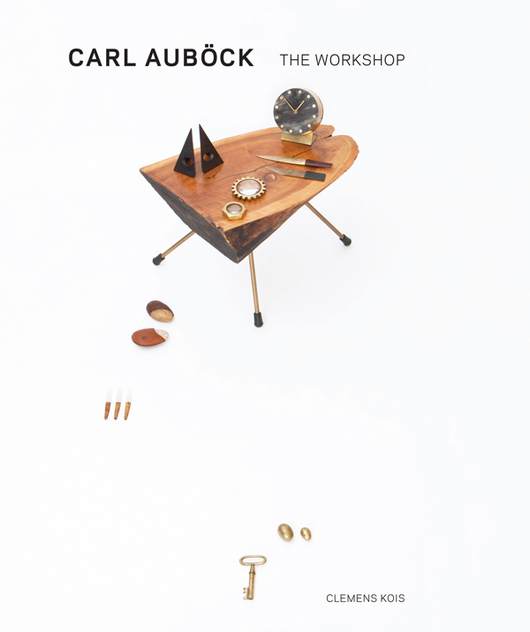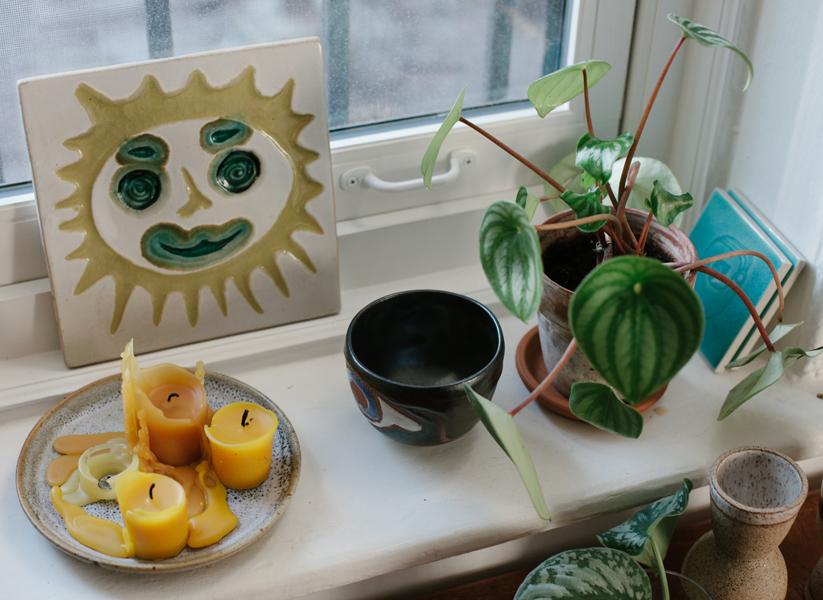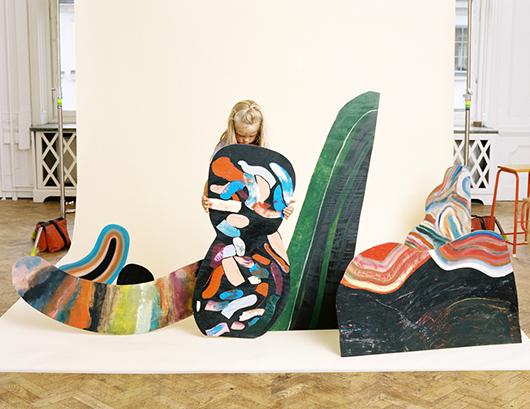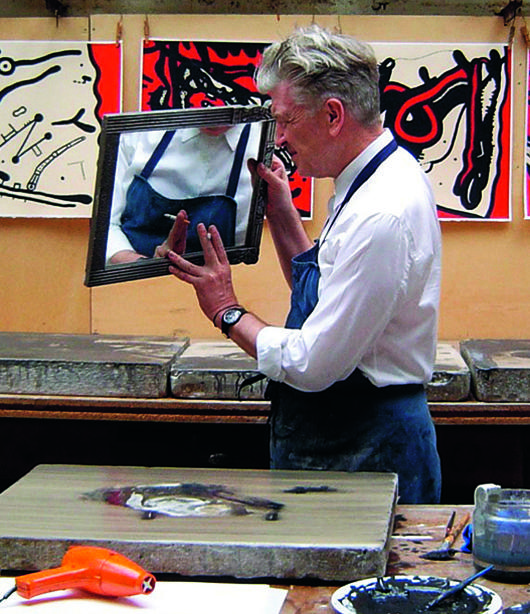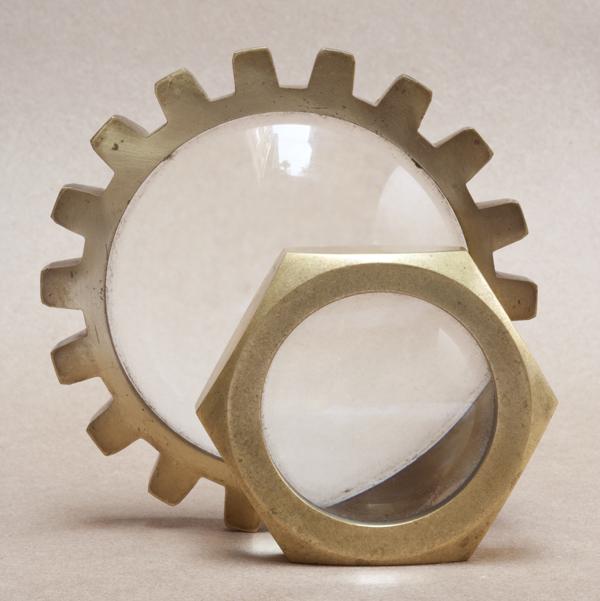
02.27.13
Excerpt: Book
Carl Auböck: The Workshop by Clemens Kois and Brian Janusiak
PHOTOS BY CLEMENS KOIS
Is it possible to love something too much? What about when you’re an avid collector of something that teeters on the line between fame and obscurity? For Austrian photographer Clemens Kois, a longtime devotion for the century-old Viennese design workshop Carl Auböck carried a particularly trying dilemma: He had the chance to make a book that could finally introduce the long-overlooked brand to the mainstream, vindicating his fervor and helping to build up the very collecting market he was engaged in, but that would in all likelihood make it harder for him to acquire the objects he loved so much. Luckily for the rest of us, he chose to follow his passion, joining forces with Brian Janusiak of Project No. 8, Patrick Parrish of Mondo Cane, and Carl Auböck: The Workshop, which came out this past fall. We’ve excerpted eight of the objects Kois shot for the book, along with their backstories, as told to he and Janusiak by Carl Auböck IV, the latest son to run this multi-generational atelier.
But first, a little backstory from Kois himself: “Wandering through flea markets while studying in Vienna in the ’90s, I happened to come upon Auböck. I didn’t know what it was at first, just that it was really beautiful, and cheap at that time. Then four years ago I was at an antique shop in Salzburg when I saw a box filled with Auböck pieces, and I bought 90% of the box. So in one instant I had 20 to 30 pieces. Now I have 80 to 90. You still find it at flea markets in Austria because people don’t know what it is — their grandmother and grandfather had it, and their grandchildren are selling it for 5 Euros.
“Being a photographer, I shoot lots of apartments for magazines. I realized that in many of those houses there were Auböcks everywhere; I heard there was an Auböck still out there — Carl IV — so I thought, why don’t I call him and ask if we can make a book? He showed me three books that already existed about the company, but they were books for freaks — one of them had 2,000 tiny photos in it and you had to use a magnifying glass to see them. I thought it was time to make a book to show the pieces really big and beautiful, and from a different eye than the Auböck family itself. I took photos in the Auböck archive for three days, and photos of my collection. I also shot at Patrick Parrish’s place in New York for eight days. Brian Janusiak did the graphic design, and we choose to use some totally cuckoo crazy pieces. Some were a piece of that time, like a cookie holder. You wouldn’t use a cookie holder anymore, but the family made 4,500 different designs, and it’s important to see the variety. The paintbrush holder is one of my favorite pieces.
“It was important to me for the reader to be able to see that the objects have been used, that they’ve been out there in the world for the last 50-60 years. I didn’t polish them crazy; they had to have their patina. It’s a picture book, really, meant to introduce people to this beautiful crazy fantasy world this family was into, and what the Austrians made at a time when it was a little bit hard to make things. After WWII, the Auböcks were trying to teach people that there was more out there than straight, functional design. They’re like little sculptures.”
[Top] Magnifier No. 5071 (1958) and No. 5205 (1959)
“At the time these pieces were created, a large part of the Auböck clientele was made up of architects and building engineers. The tools they used in their professions inspired designs that would serve as motifs for promotional gifts and would later be adopted into the collection. Here, for instance, we have an abstracted, hexagonal nut embedded with a reading glass.”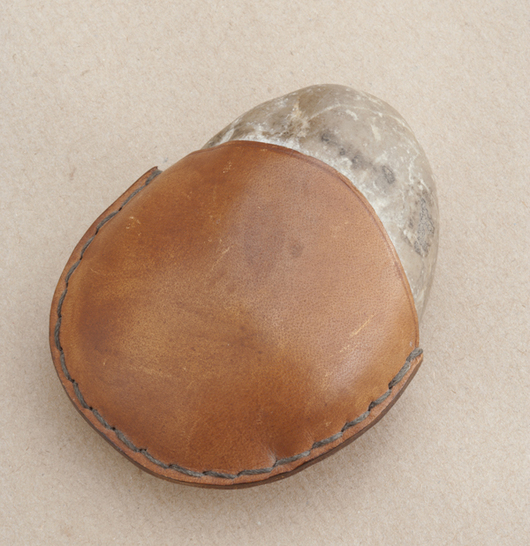 Paperweight No. 4339 (1950)
Paperweight No. 4339 (1950)
“CA II and his family owned a holiday cabin on the Danube, where they loved to spend the hot summer months. The banks of the river are scattered with beautiful pebbles in many colors. During his ‘objet trouvé’ period – which also saw the creation of such objects as the Tree Table, the Simperl Stand, the Weitling Stand, etc. – CA II took these stones and changed their inherent nature by ‘outfitting’ them in leather. One such stone could be found on the desk of Walter Gropius, gifted to him by either CA II or CA III – both of whom he became acquainted with at Bauhaus Weimar and the Massachusetts Institute of Technology, respectively.”
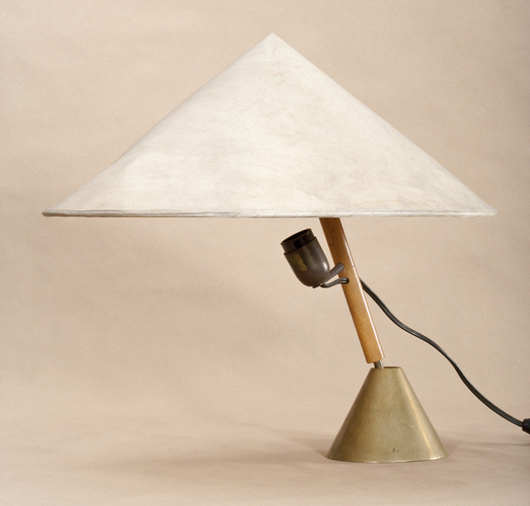 Table Lamp No. 3875 (1948)
Table Lamp No. 3875 (1948)
“All the lamps produced at Werkstätte Carl Auböck are designed to enable different areas of illumination despite remaining in one place. The Vice-Versa lamp, for instance, has a reversible shade that converts it from a ceiling spotlight to a reading lamp, depending on its positioning. Other table and floor lamps feature a cast brass base which tilts to point the light in a specific direction. This particular table lamp has a two-part base. The stem, which has both a socket for the bulb and a separate one for the conical shade, is connected to a heavy brass ball found within the truncated cone base that allows the slanted rod to move in all directions.”
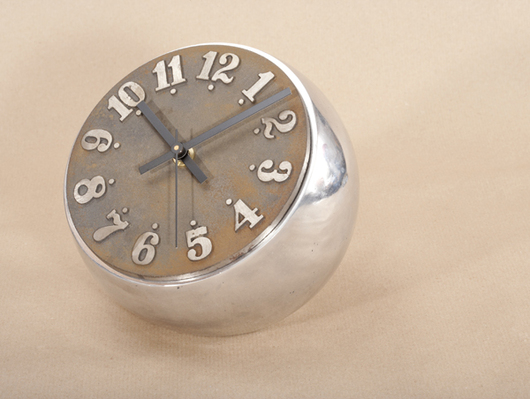 Table Clock No. 5052 (1962)
Table Clock No. 5052 (1962)
“While working for the International Council of Societies of Industrial Design (ICSID) in the 1960s, CA III had the chance to meet and befriend designers such as George Nelson, whose iconic, modernist work – and, most notably, his wall and desk clocks – Auböck admired. The cylindrical and bauble shaped table clocks, which came outfitted in different colors of leather or even horn, pay homage to those momentous encounters. The clock faces were made from cast iron and plated with polished nickel.”
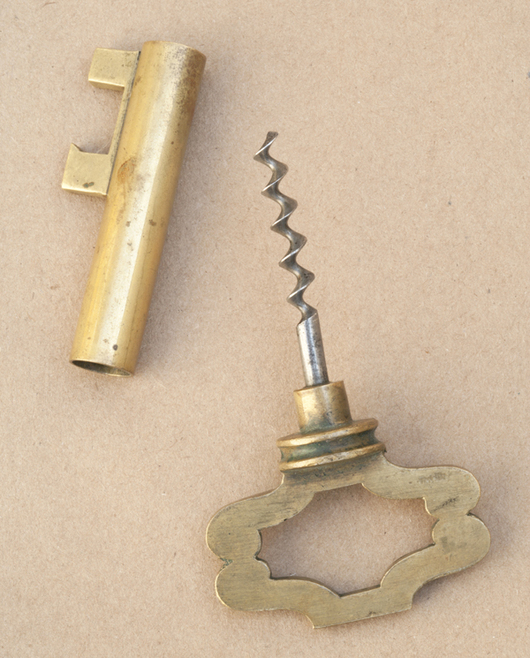 Corkscrew No. 3375 (1932)
Corkscrew No. 3375 (1932)
“The key-shaped corkscrew/bottle opener consists of two parts: the cast brass corpus and a steel corkscrew spindle. Both parts are connected using coarse thread. The piece was designed by CA III when he was just 14 years old, though the further production of the various sizes was undoubtedly overseen by CA II. Polished to a high gloss.”
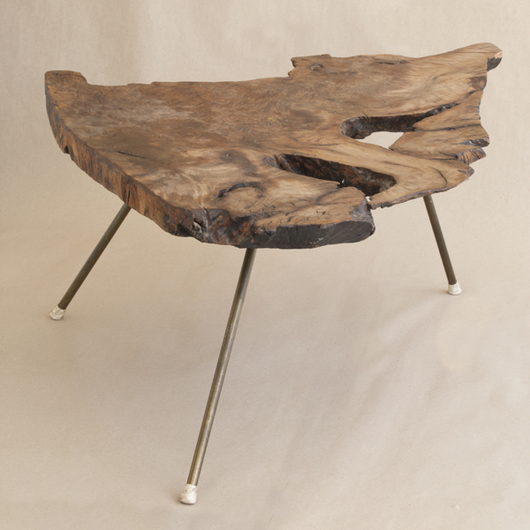 Table No. 4204 (1948)
Table No. 4204 (1948)
“It was pure happenstance that led to the idea of creating side tables from objét trouvés. One day, CA II was picking up goods from the turnery using a pushcart. There, in the courtyard, he noticed a big pile of tree fragments and stumps, some of them of impressive size. CA II had always had an eye for things that most others would consider useless or worthless. So, he asked the owner if he could have some of the logs. The owner, who merely used the wood for heating and had plenty of it to spare, had no problem parting with a few pieces. CA II took his find to the workshop and the tree table was created. Early pieces featured legs made of varnished iron pipes; later, when the economy began to boom, he exchanged them for brass ones.”
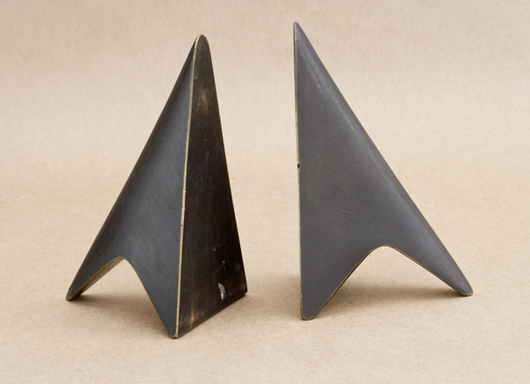 Bookends No. 3846 (1949)
Bookends No. 3846 (1949)
“These bookends, also known as ‘rockets’ at the Werkstätte, are proof of CA II’s propensity for a rational, geometrical use of forms around 1950. Perhaps it was the collaboration with his son CA III, who had an immense but also playful influence on his creative transitions. The dark patina indicates the rather poor casting quality of the post-war era. Back then, brass was melted from old WW II artillery cartridges and shell casings. Gunshot residue caused the brass surface to become flawed. Processing the metal by means of soldering it, for example, would have been too pricy. Instead, the object was given a very dark patina to make the mistakes “disappear.” Only parts of the surface and edges were mirror polished for accentuation.”
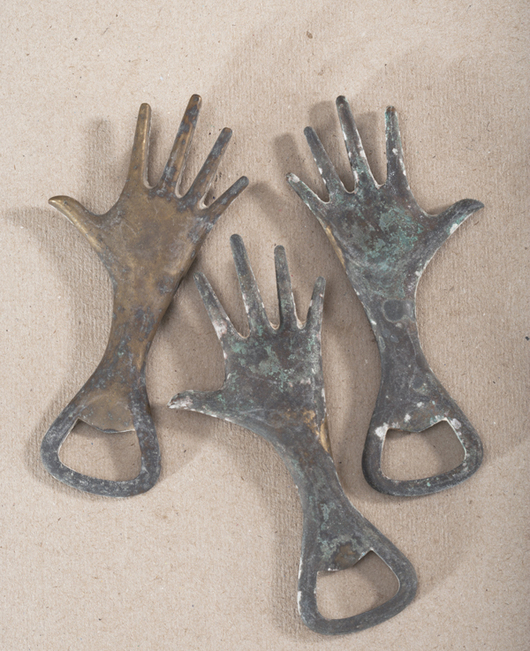 Bottle Opener No. 4224 (1949)
Bottle Opener No. 4224 (1949)
“The hand-shaped design is perhaps one of the most significant of the Auböck icons. It is a universal hand, an ageless hand, a positive hand. It is a hand that possibly warns against something or simply points something out. This hand comes in the form of a paperweight (one of them was and still is on Walter Gropius’s desk), a cork screw with a bamboo sheath, and a bottle stopper. In the case of the bottle stopper, the cork is either mounted to the palm of the hand (so that the hand closes the bottle with its palm) or to the wrist (so that it looks like someone fell into the bottle and is signaling for help with his hand). There are also hand-shaped martini swizzle sticks, letter openers, etc. Aside from its timeless signaling quality, the hand has many other functions that give it a playfully ironic appeal.”
